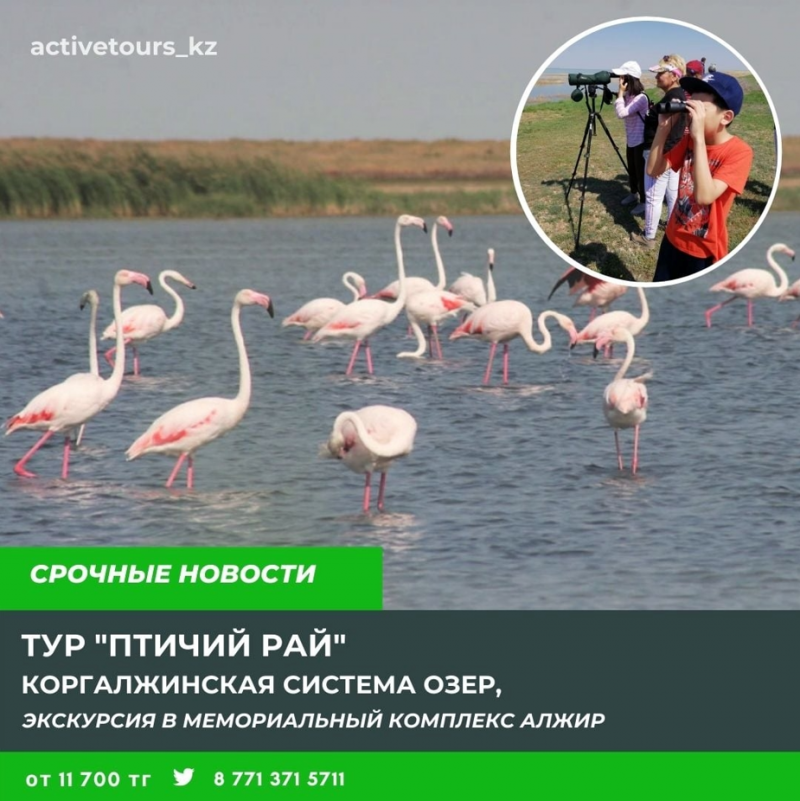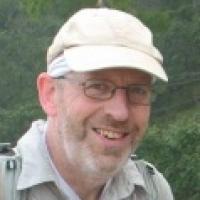Viewed on Google Earth, Kazakhstan’s steppes and deserts appear an uninviting, dull brown. Zoom in to the Korgalzhyn nature reserve, however, and we find a blue-green oasis. The salty waters of Lake Tengiz and surrounding area are home to a rich array of flora and fauna. Wild tulips, saiga antelopes, and pink flamingos are among hundreds of protected species. The reserve is of global significance. In 1976, Ramsar added Korgalzhyn to its list of wetlands because it is a major habitat for waterfowl. UNESCO included the reserve in its list of World Heritage Sites in 2008, and four years later, designated it a “biosphere reserve.” The reserve’s history has involved scientists, conservationists, enterprises, the authorities, and local inhabitants as well as its unique ecosystem.
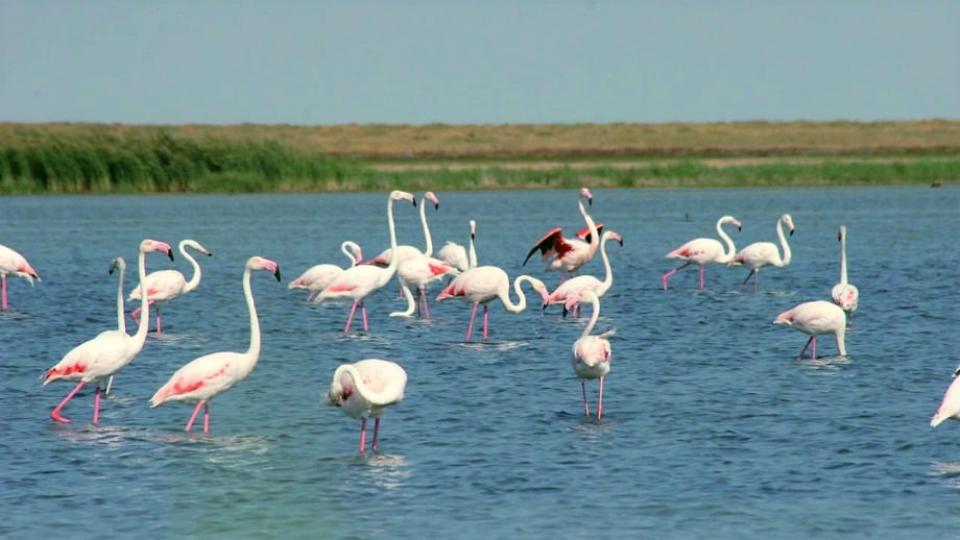
Flamingos on Lake Tengiz, Korgalzhyn nature reserve.
Flamingos on Lake Tengiz, Korgalzhyn nature reserve.
© Galiya Mensiitova, Active Tours KZ, Nur-Sultan, Kazakhstan, n.d.
Used by permission
The copyright holder reserves, or holds for their own use, all the rights provided by copyright law, such as distribution, performance, and creation of derivative works.
The three-hour drive from Kazakhstan’s ultra-modern capital of Nur-Sultan (Astana) gives clues to the reserve’s historical context. One aspect of its history is the harsh exploitation of the land and people of the Soviet Union, of which Kazakhstan was a part before it broke up in 1991. Kazakhstan’s new capital city was funded by its oil, gas, and other extractive industries that have done immense harm to the environment. The road to the reserve passes the museum-memorial complex of ALZhIR: a Stalin-era labor camp for wives and families of victims of the terror. Along both sides of the road lie former pastures and hayfields that were ruined during the “Virgin Lands Campaign” of 1954–1965 to grow grain in the semi-arid steppe to feed the Soviet population. Careless techniques and recurring droughts caused a “dust bowl.”
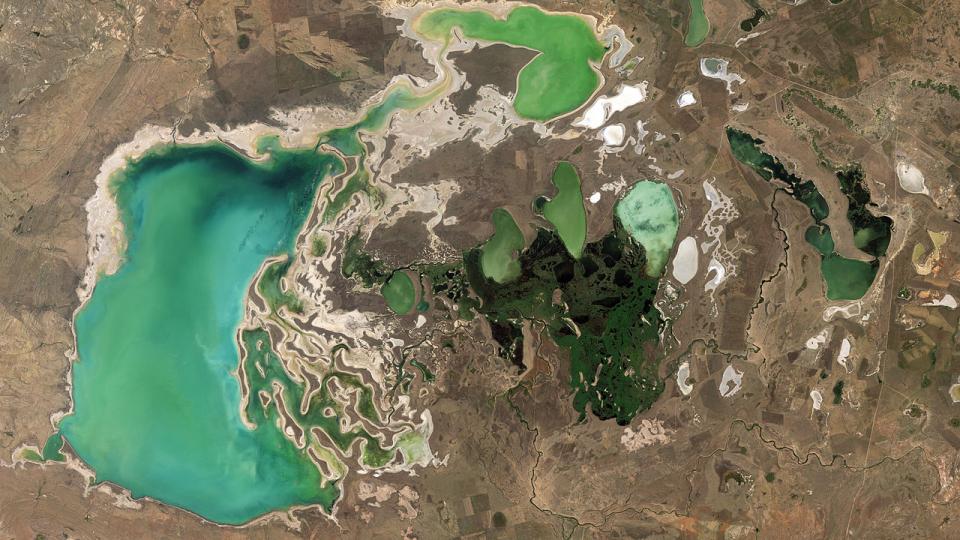
View of Lake Tengiz from space.
View of Lake Tengiz from space.
Photograph by NASA. Accessed via Wikimedia Commons on 9 February 2022, click here to view source.
 This work is licensed under a Creative Commons Public Domain Mark 1.0 License.
This work is licensed under a Creative Commons Public Domain Mark 1.0 License.
Another aspect of the reserve’s historical context is a legacy of nature protection in the Soviet and Russian states dating back to the late nineteenth century. Scientists pioneered absolute protection of samples of what they believed was untouched nature solely for scientific research. Parallel to Soviet plans to “conquer nature” for economic development was work by scientists and conservationists to set up a network of scientific nature reserves (zapovedniki). Their strict standards of protection conform to the category “1a Strict Nature Reserve” laid down later by the International Union for the Conservation of Nature. However, political and economic pressures for exploitation of nature meant that the Soviet zapovedniki waxed and waned over time.
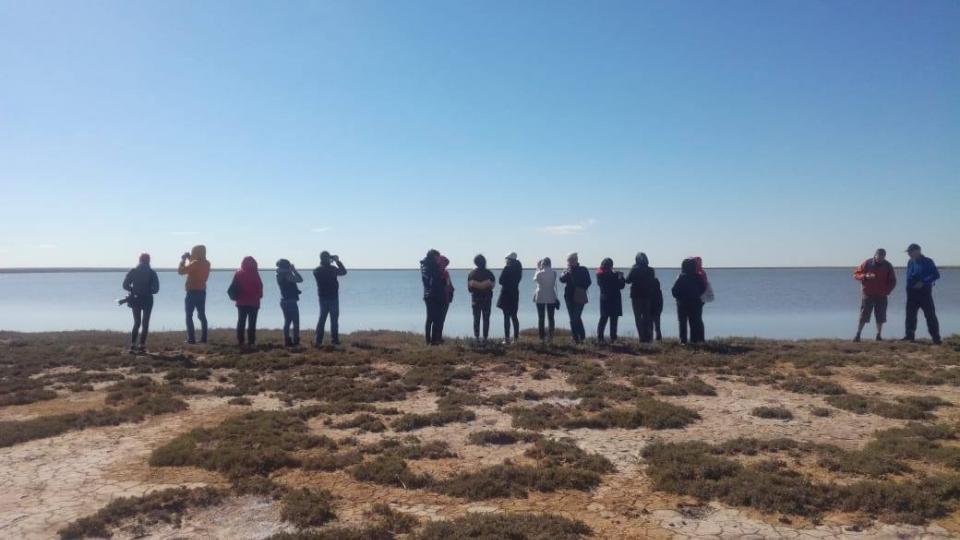
Ecotourists watching birds on lake (author at extreme right).
Ecotourists watching birds on lake (author at extreme right).
© Galiya Mensiitova, Active Tours KZ, Nur-Sultan, Kazakhstan, 2019.
Used by permission
The copyright holder reserves, or holds for their own use, all the rights provided by copyright law, such as distribution, performance, and creation of derivative works.
The Korgalzhyn reserve’s history, outlined on its official website, was part of this pattern. Two smaller, short-lived reserves were established in 1958, but lacked political support when exploiting nature was paramount. The current reserve was established around Lake Tengiz in 1968. The end of the “Virgin Lands Campaign” in 1965 gave conservationists more opportunity to advance their cause. After 1968, exploitation of natural resources, such as fisheries and pastures, was ended. Enterprises, including a reed-processing factory, were closed. Several settlements were relocated beyond the reserve’s boundaries. The main work of the reserve was environmental management and monitoring and scientific research. After 1991, the government of independent Kazakhstan gave the reserve more land in the surrounding steppe. But, according to researcher Dinara Yerimbekkyzy, during the economic crisis of the 1990s, it suffered from poaching and other violations by people struggling to support themselves. More recently, the reserve’s activities have been augmented by additional educational work and ecotourism, which provide employment and business opportunities for the local population. On my first visit, I enjoyed the hospitality of Timur Iskakov’s small guest house in Korgalzhyn village. He also provided transport to the reserve.
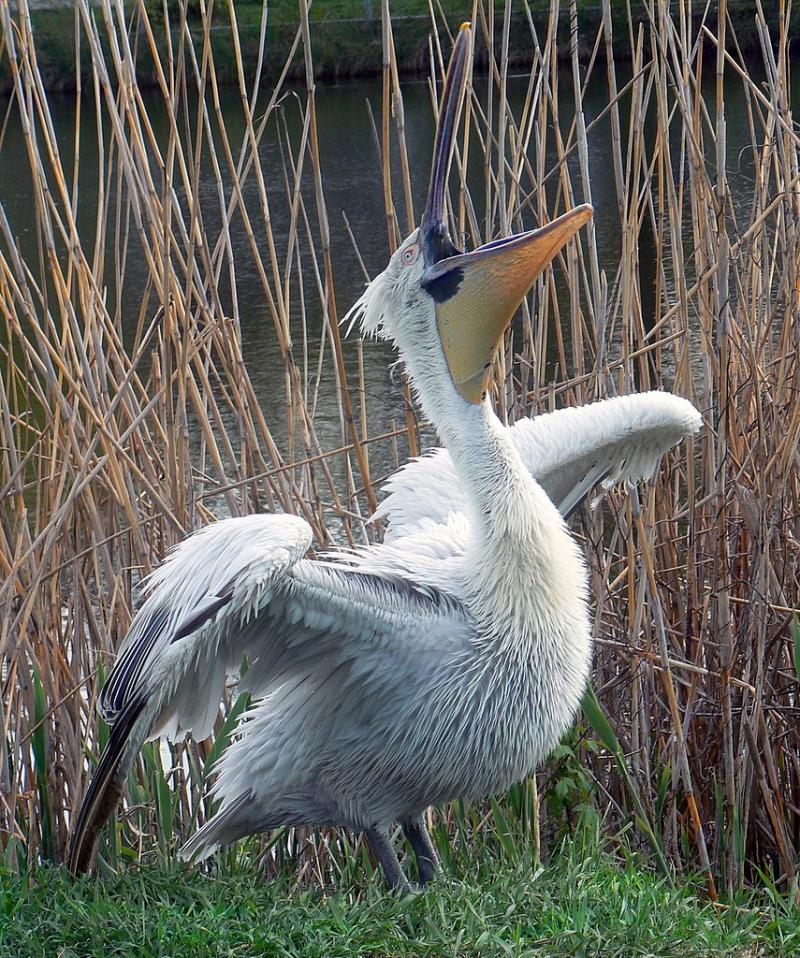
Dalmatian Pelican.
Dalmatian Pelican.
Photograph by Zhanetta Bagadzhiyan, 2014.
Accessed via Wikimedia on 9 February 2022. Click here to view source.
 This work is licensed under a Creative Commons Attribution-ShareAlike 3.0 Unported License.
This work is licensed under a Creative Commons Attribution-ShareAlike 3.0 Unported License.
The Korgalzhyn nature reserve is best known internationally as a key staging site for migratory waterfowl from Europe, Africa, and South Asia to breed in Siberia. Around fifteen million geese, ducks, cranes, waders, and other birds feed on Lake Tengiz’s mudflats and reed beds. Over a third of a million birds stay to breed. Korgalzhyn hosts the most northerly breeding colony of Greater Flamingos (Phoenicopterus ruber). Around a third of the world’s White-headed Ducks (Oxyura leucocephala) breed in the reserve. Hundreds of Dalmatian Pelican (Pelicanus crispus), about a tenth of the global population, feed on the lake’s fish while they breed.
The reserve’s skies are home to raptors, including endangered steppe eagles (Aquila nipalensis) and great bustards (Otis tarda), among many other avian species. The bird life attracts tourists. International companies fly in bird enthusiasts. Local tour operators, for example Active Tours Kazakhstan run by Galiya Mensiitova, take groups from Nur-Sultan to the “Bird Paradise” (Ptichii rai). I went with Galiya on my second visit.
The reserve is also rich with land animals. They include endangered, and elusive, saiga antelopes (Saiga tatarica) which graze on the steppe around the lake in the summer. Saiga require protection from poachers who hunt them for their horns that are valued in Chinese medicine.

Saiga antelope.
Saiga antelope.
© Andrey Giljov, 2016. Accessed via Wikimedia Commons on 9 February 2022, click here to view source.
 This work is licensed under a Creative Commons Attribution-ShareAlike 4.0 International License.
This work is licensed under a Creative Commons Attribution-ShareAlike 4.0 International License.
Visitors hurry to the reserve to see the beautiful wild tulips (Tulipa schrenkii, Tulipa patens) that flower briefly in the spring. Long before bulbs were taken to Europe, tulips grew naturally from seed in the Eurasian steppe. Tulips are not from Amsterdam!
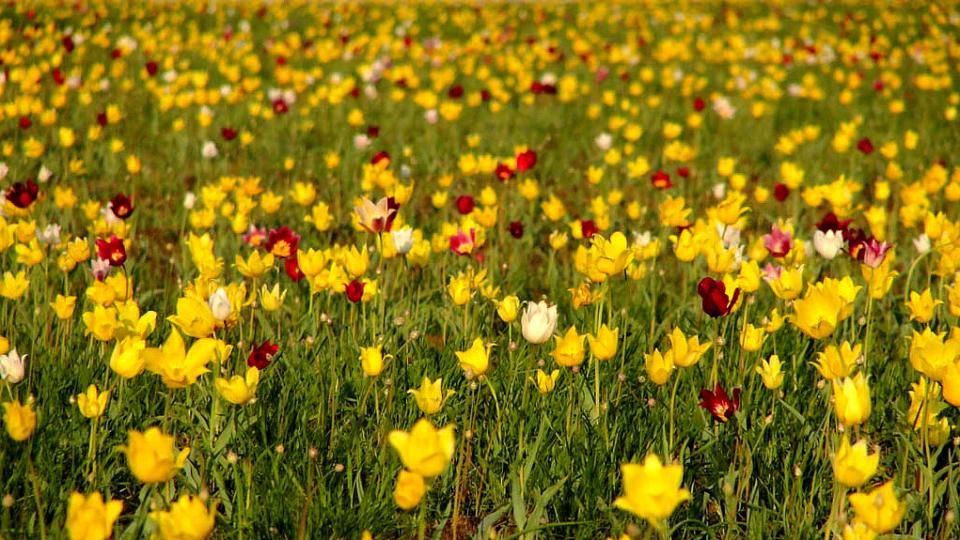
Photograph of wild tulips at Korgalzhyn nature reserve.
Photograph of wild tulips at Korgalzhyn nature reserve.
© Aleksandr Fedulin, Active Tours KZ, Nur-Sultan, Kazakhstan, n.d.
Used by permission
The copyright holder reserves, or holds for their own use, all the rights provided by copyright law, such as distribution, performance, and creation of derivative works.
Returning from the reserve to Nur-Sultan, we find an environmental controversy: the city authorities are draining the much smaller Lake Taldykol and surrounding wetlands, which provide habitats for flamingos, pelicans, and other migratory birds, to build more housing for the growing city. Environmental activists who are campaining to protect this oasis, known locally as the “lungs of the city,” have set up a Facebook page called “SOS Taldykol.” This recent episode is evidence for the fragility of sanctuaries for wildlife in the face of urban development and importance of protected oases such as the Korgalzhyn reserve.
This article is dedicated to the memory of Maya Peterson, former RCC fellow and pioneering environmental historian of Central Asia.
How to cite
Moon, David. “A Blue-Green Oasis in the Heart of the Kazakh Steppe: The Korgalzhyn Nature Reserve.” Environment & Society Portal, Arcadia (Spring 2022), no. 2. Rachel Carson Center for Environment and Society. doi:10.5282/rcc/9389.
ISSN 2199-3408
Environment & Society Portal, Arcadia
 This work is licensed under a Creative Commons Attribution 4.0 International License.
This work is licensed under a Creative Commons Attribution 4.0 International License.
2022 David Moon
This refers only to the text and does not include any image rights.
Please click on the images to view their individual rights status.
- Breyfogle, Nicholas, ed. Eurasian Environments: Nature and Ecology in Imperial Russian and Soviet History. Pittsburgh, PA: University of Pittsburgh Press, 2018.
- Elie, Marc. “The Soviet Dust Bowl and the Canadian Erosion Experience in the New Lands of Kazakhstan, 1950s–1960s.” Global Environment 8, no. 2 (2015): 259–92.
- Lillis, Joanna. “Kazakhstan’s Rare Antelope Makes Baby Steps Toward Revival. The Government’s Conservation Efforts are Boosting the Endangered Saigas’ Numbers.” Eurasianet, 24 May 2021. https://eurasianet.org/kazakhstans-rare-antelope-makes-baby-steps-toward-revival.
- Lobacheva, Mariya, and Danila Bekturganov. “Oil and Gas in Kazakhstan.” The Ecologist, 23 November 2020. https://theecologist.org/2020/nov/23/oil-and-gas-kazakhstan.
- Schielzeth, Holger, Götz Eichhorn, Thomas Heinicke, Johannes Kamp, Maxim A. Koshkin, Alexej V. Koshkin, and Lars Lachmann. “Waterbird Population Estimates for a Key Staging Site in Kazakhstan: A Contribution to Wetland Conservation on the Central Asian Flyway.” Bird Conservation International 18, no. 1 (2008): 71–86.
- Weiner, Douglas R. A Little Corner of Freedom: Russian Nature Protection from Stalin to Gorbachev. Berkeley: University of California Press, 2002.
- Yerimbekkyzy, Dinara. “Korgalzhyn State Nature Reserve: Management Process and its Problems.” Master's thesis, Universiti Teknologi Malaysia, 2009.


